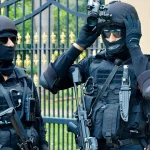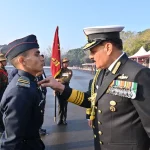Becoming a Lieutenant in the Indian Army is not merely a career choice; it’s a commitment to serve the nation with honor, discipline, and integrity. The role of a Lieutenant is crucial in the Indian Army, as it involves significant responsibilities, including leading troops, maintaining operational readiness, and ensuring the welfare of soldiers. This article aims to guide aspiring candidates through the comprehensive journey to achieving this prestigious rank, detailing eligibility criteria, competitive examinations, training processes, and career progression, while also discussing the challenges they might face along the way.
Introduction
The Indian Army is one of the largest and most respected military forces in the world, playing a vital role in national security and global peacekeeping efforts. Within this esteemed institution, the rank of Lieutenant holds substantial significance. As the entry-level officer rank, Lieutenants are the first line of leadership, managing platoons and serving as the crucial link between higher command and the soldiers. This article will take you through the important steps required to become a Lieutenant, demystifying the selection process and highlighting the commitment necessary to wear the uniform.
Historical Context
The Indian Army’s foundation has deep historical roots, tracing back to the British colonial era. Post-independence, the role of the Army evolved dramatically, emphasizing professionalism, competence, and integrity. The position of Lieutenant has historically been pivotal within the military hierarchy. Traditionally, this was where young officers learned the intricacies of military leadership, and its importance has only grown in the contemporary context as the challenges of modern warfare and peacekeeping operations become increasingly complex.
Understanding the Path to Becoming a Lieutenant
The path to becoming a Lieutenant can be delineated through several key stages, beginning with eligibility criteria and culminating in commissioning as an officer.
Eligibility Criteria
- Nationality: Candidates must be Indian citizens.
- Age Limits:
- For the National Defence Academy (NDA): Ages 16.5 to 19.5 years.
- For the Combined Defence Services (CDS): Ages 19 to 24 years.
- Educational Qualifications:
- NDA: Must have completed 10+2 with physics and mathematics.
- CDS: Requires graduation from a recognized university. For technical entries, relevant degrees like B.E. or B.Tech are necessary.
- Physical Fitness:
- The standards are stringent, requiring candidates to meet ideal measurements for height, weight, and vision, along with passing endurance and fitness tests.
- Marital Status: Candidates must typically be unmarried upon entry, especially for NDA and technical entries.
Entrance Exams and Selection Process
Successfully clearing one of the key entrance exams is an essential step in the journey to become a Lieutenant.
National Defence Academy (NDA) Examination
The NDA examination is aimed at school students who are looking to enter the Army right after their higher secondary education. Conducted by the Union Public Service Commission (UPSC), it consists of a written exam followed by an SSB interview.
- Written Exam: Comprises subjects like Mathematics, General Ability Test (GAT), and English, assessing candidates’ aptitude and knowledge.
- SSB Interview: Focuses on psychological evaluations to determine suitability for an officer’s role, incorporating tasks that assess leadership and teamwork.
Combined Defence Services (CDS) Examination
The CDS examination caters to graduates and is also conducted by UPSC. Candidates can enter the Indian Army, Navy, or Air Force through this exam.
- Written Exam: Comprises English, General Knowledge, and Mathematics.
- SSB Interview: Similar to the NDA, the focus is on psychological and physical assessments along with personal interviews.
Medical Examination
Following successful completion of the SSB interviews, candidates must undergo a comprehensive medical examination to ensure they meet health standards. This examination assesses physical and mental health to confirm that candidates can endure the rigors of military training and operations.
Intensive Military Training
Once candidates pass the medical examination, they embark on their military training journey, which varies based on the entry route:
- Training at the NDA: This prestigious academy in Pune offers a three-year programme for aspiring officers who entered via the NDA exam, followed by one year of training at the Indian Military Academy (IMA) in Dehradun.
- Training at the IMA: For candidates from the CDS, training typically lasts around 18 months at the IMA.
Both training programmes encompass a variety of physical fitness regimes, combat training, leadership training, and tactical skills related to counter-insurgency operations.
Commission and Rank
Upon successful completion of their respective training programs, cadets are commissioned as Lieutenant in the Indian Army.
- Rank and Insignia: Lieutenants wear two stars on their shoulder epaulettes, symbolizing their authority and leadership.
- Roles and Responsibilities: Lieutenants are responsible for leading a platoon of about 30 to 60 soldiers. Their roles involve tactical operations, maintaining discipline in the ranks, and ensuring the welfare of their soldiers.
Salary and Career Progression
The financial benefits and career advancement opportunities within the Indian Army are noteworthy.
- Starting Salary: A freshly commissioned Lieutenant can expect a basic pay of approximately ₹56,100, which, with allowances, translates to an in-hand salary around ₹80,000 per month.
- Promotion Path:
- Promotion to Captain generally occurs after two years of service.
- The next ranks include Major after about six years, Lieutenant Colonel after around 13 years, and Colonel after approximately 15-18 years of service.
The career progression is not just rank-based but also involves acquiring various qualifications and skills, offering officers diverse opportunities for specialization.
Challenges and Solutions
While the journey to becoming a Lieutenant is structured, it is not devoid of challenges.
- Physical and Mental Endurance: The training period can be grueling, demanding high levels of physical fitness and mental resilience.
- Solution: Prior preparation focusing on physical fitness and psychological preparedness can play a crucial role in overcoming these challenges. Candidates are encouraged to engage in physical training and consult resources such as SSBCrack for preparation strategies.
- Academic Pressure: The examinations (NDA, CDS) are known for their competitive nature, with a high level of difficulty.
- Solution: Utilizing study resources like books and online courses from SSBCrackExams can greatly assist candidates in effectively preparing for these tests.
- Adaptation to Military Culture: New officers often find transitioning to military life demanding, given the discipline and hierarchy inherent in the structure.
- Solution: Support from mentors, senior officers, and training peers can aid in acclimatizing to the militarized environment.
Future Trends and Predictions
As global geopolitical landscapes evolve, the role of the Indian Army is expected to expand. Future trends may include:
- Technological Advancements: The integration of advanced technology in warfare requires Lieutenants to stay updated on technical skills, including cyber awareness and tech-based warfare tactics.
- Focus on Leadership Skills: With evolving military strategies, there will be an emphasis on developing soft skills, such as emotional intelligence and decision-making ability for effective leadership at all levels.
- Diversity and Inclusion: Encouraging a diverse range of candidates will become essential, leading to policies that support inclusivity within military ranks.
Conclusion
The journey to becoming a Lieutenant in the Indian Army is structured, challenging, and deeply rewarding. From fulfilling the eligibility criteria to passing competitive exams, undergoing intense training, and finally securing a position of leadership, this path requires unwavering dedication and commitment. With generous salary structures and the potential for rapid career advancement, the role is one that not only tests an individual’s mettle but also offers a chance to make a significant impact on the nation.
For those aspiring to don the uniform, engaging with platforms like SSBCrack and utilizing their preparatory materials can provide an invaluable edge, ensuring candidates are thoroughly equipped for what comes next. The call to serve is one of great honor and responsibility. Embrace the challenge, and prepare to lead with valor!












